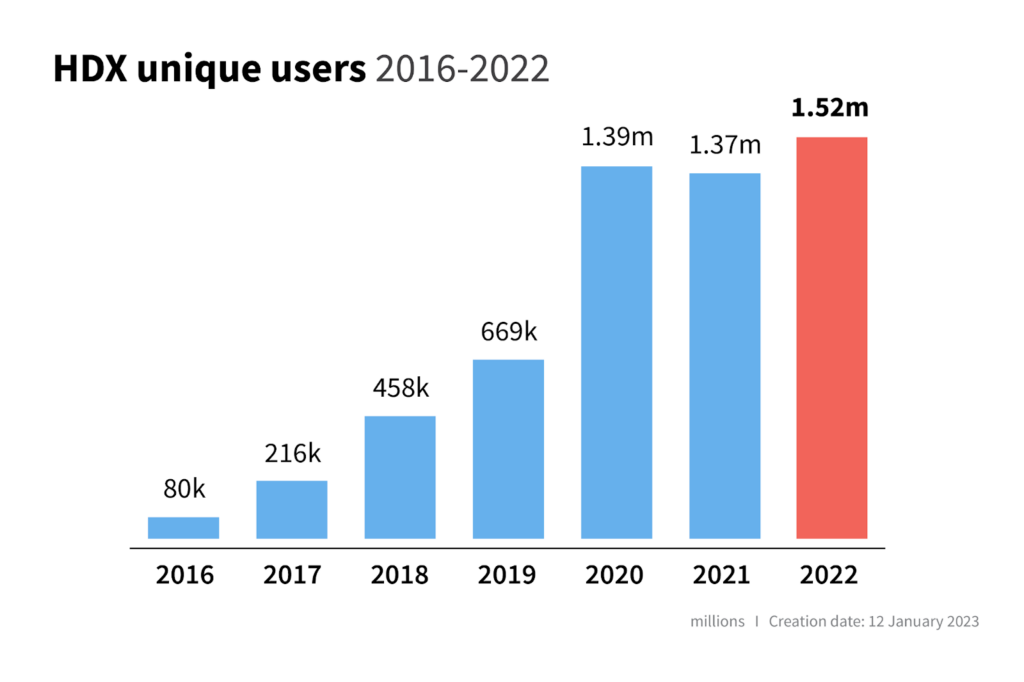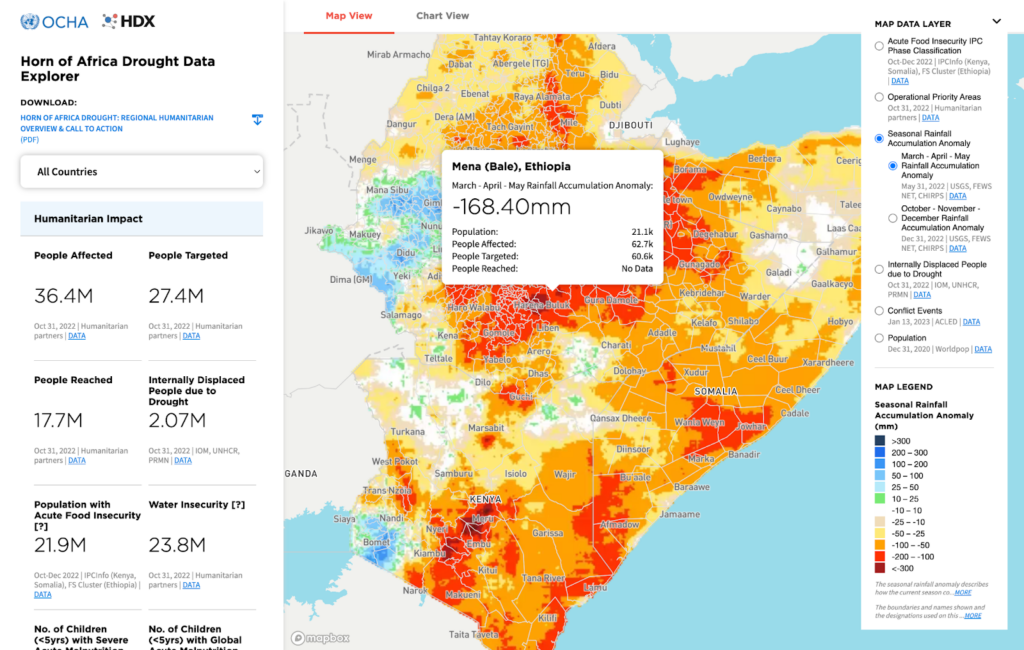Share
In 2022, the Humanitarian Data Exchange (HDX) continued to enable the sharing and use of data about humanitarian crises around the world. The platform was used by 1.5 million people in 233 countries and territories throughout the year, an increase of 8 percent compared with 2021. Organizations added 3,700 new and updated datasets, bringing the total to more than 20,400 datasets, which were downloaded over 1.8 million times. Below we provide a closer look at the trends from this year and highlight a few of the new organizations that joined the community.

Our main priority in 2022 was improving access to data for countries with an ongoing humanitarian operation. This included the 25 locations with coordinated Humanitarian Response Plans (HRPs) such as Afghanistan and Yemen, but also places where OCHA has ongoing anticipatory action pilots such as Bangladesh and the Philippines.
As always, the most sought-after data on the platform included the administrative boundaries and populated places of a country, as well as the number of people affected and in need of assistance and which organizations are responding. This past year we also saw an increase in demand for climate impact data, which is essential for understanding the effect of climate hazards on vulnerable populations.
Over the course of the year, we developed two new data visualizations to help the humanitarian community keep track of key figures and trends for top crises.
- The Ukraine Data Explorer, released in March 2022, includes data about the number of refugees and internally displaced people, civilian casualties, the location of hostilities, humanitarian funding, border crossing points and the Black Sea Grain Initiative.
- The Horn of Africa Drought Data Explorer, released in October 2022, tracks the humanitarian impact of the crisis across Ethiopia, Kenya and Somalia and includes data about acute food insecurity, operational priority areas, seasonal rainfall, internally displaced people and more.

As of January 2023, the COVID-19 Data Explorer will no longer be maintained after more than two years of monitoring data about the pandemic in humanitarian operations. The underlying datasets should continue to be available on HDX.
We welcomed 18 new organizations to HDX in 2022, bringing the total to almost 300 organizations. A few highlights include:
- Famine Early Warning Systems Network (FEWS NET) is a leading provider of early warning and analysis on acute food insecurity around the world. They shared country-specific datasets related to cross-border trade, acute food insecurity estimates and staple food prices.
- Pacific Community (SPC) is a scientific and technical organization in the Pacific region. So far, they have shared population grid datasets for the Cook Islands, Niue, New Caledonia, American Samoa, Guam, Nauru, Palau and Vanuatu.
- United Nations University World Institute for Development Economics Research (UNU-WIDER) provides economic analysis and policy advice with the aim of promoting sustainable and equitable development. They shared data about government tax and non-tax revenues, allowing for analysis at the country and regional levels.
We also want to acknowledge the long-standing data contributions from partners such as ACLED, HOTOSM, IPC, REACH, UNFPA, UNHCR, WFP and our own OCHA field offices.
We will be providing more insights about the data on HDX in The State of Open Humanitarian Data 2023 report, which will be released in February. We look forward to working with all of you in the year ahead. Please reach out with questions or comments at hdx@un.org.